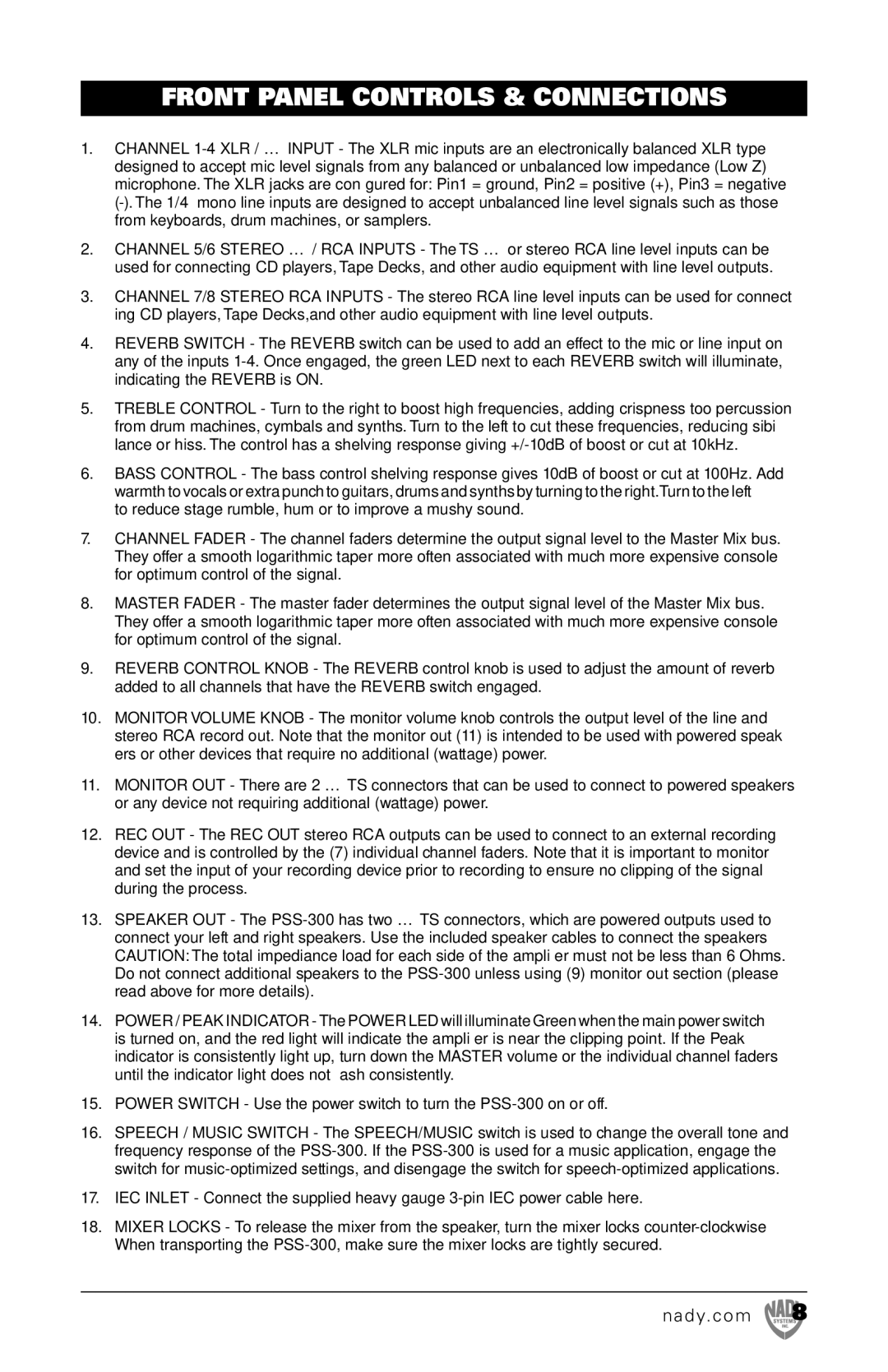PSS300 specifications
Nady Systems PSS300 is a cutting-edge wireless microphone system designed to meet the demands of professional performers, musicians, and speakers. Renowned for its reliable performance and clear audio quality, the PSS300 is tailored for both stage and public speaking applications.One of the standout features of the PSS300 is its advanced diversity reception technology. This system incorporates both true diversity and frequency-agile operation, which work together to minimize interference and ensure a strong, stable signal even in challenging environments. The dual antenna system seamlessly switches between signals to maintain optimal reception, significantly improving performance in crowded or RF-dense areas.
The PSS300 includes a lightweight and comfortable bodypack transmitter, making it ideal for users who require mobility during a performance. This transmitter features a high-quality electret condenser microphone, delivering superior sound clarity and detail. The bodypack is designed with user convenience in mind, offering an easy-access battery compartment and adjustable gain control, allowing users to adapt to different sound environments quickly.
Another noteworthy characteristic of the PSS300 is its extensive operating range. It boasts a range of up to 300 feet, making it suitable for larger venues where performers need to move freely without worrying about losing the connection. The system operates in the UHF frequency band, providing better sound quality and less susceptibility to interference compared to VHF systems.
Ease of use is central to the PSS300's design. The receiver features a simple LCD display that provides real-time information on channel selection, battery life, and signal strength. The automatic frequency scanning feature simplifies setup by quickly identifying the best available frequency, minimizing setup time and potential interference.
Furthermore, the PSS300 is built to last, with rugged construction that can withstand the rigors of regular use. Its durable design ensures reliability for touring musicians, while its low-profile aesthetic fits nicely into any professional setup.
In summary, the Nady Systems PSS300 wireless microphone system combines advanced technology, user-friendly features, and robust construction, making it a premier choice for professionals seeking high-performance audio solutions. With its impressive range, exceptional audio quality, and convenient design, the PSS300 is a reliable partner for various live sound applications.

